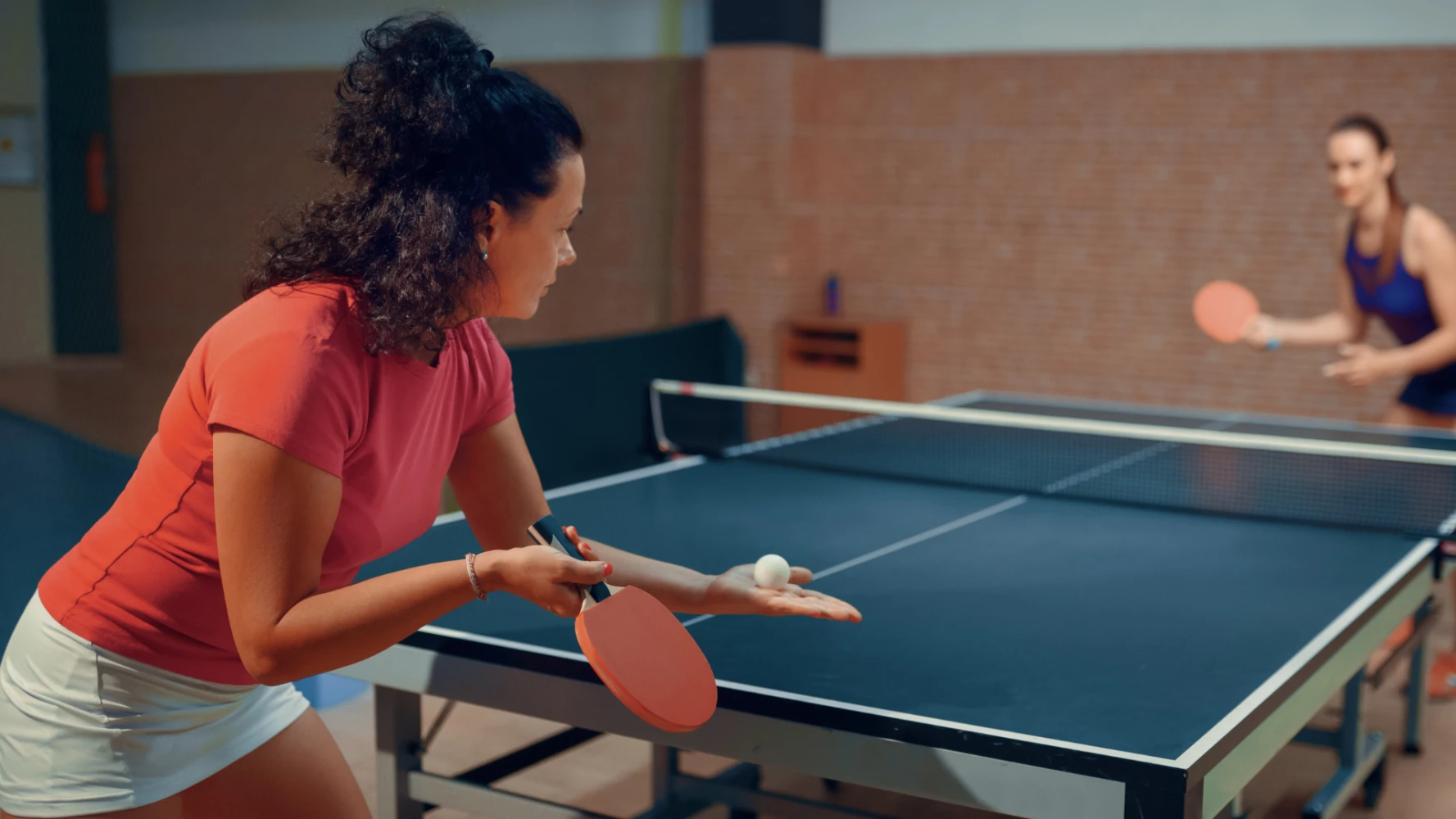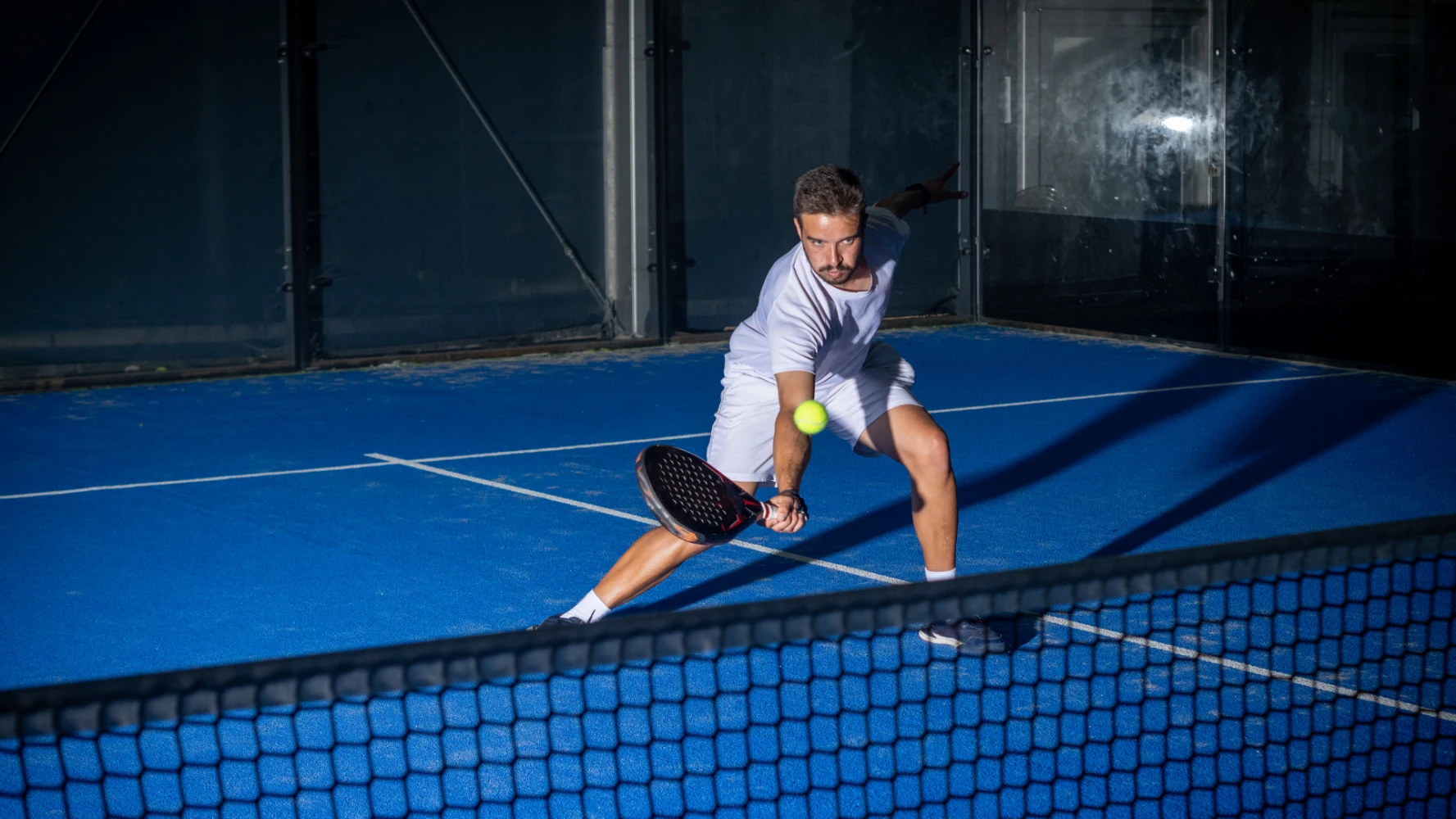Badminton is often described as a speed sport. Yet, the true key to victory lies not in arm power, but in the fluidity and efficiency of footwork. A mobile player is a player who always reaches the shuttlecock early and can execute any shot. Combined with mastery of the Clear (the deep court clear), footwork becomes the most powerful tactical tool.
The Fundamental Principles of Badminton Movement
The main objective of movement is to hit the shuttlecock at the highest possible point, while maintaining balance to immediately return to the center of the court.
The Reference Position: The Center
The Center Point: Your ideal starting position is always the center of the court (slightly behind the short service line). This is the point that minimizes the distance to all six areas of the court.
Dynamic Posture: Stay light on the balls of your feet, knees bent, body weight slightly forward. The racket should be held high and in front of you, ready for action.
The Key Footwork Movements Movement is broken down into three types of steps to cover the six zones:
The Front Lunge: Used to reach the net. This is the explosive and decisive movement. The last step is a deep lunge, with the racket-side foot forward, so that the body is low and stable for the drop shot.
Shuffle Steps (Chassé Steps): Quick lateral movements to cover the mid-court. They allow you to remain facing the net and maintain balance without crossing your feet.
The Recovery Step: The basic movement to return to the center after a shot. It is a quick and powerful step that brings the body back to the central position.
Moving Backwards: The Key to the Clear
Moving backwards, for overhead shots, is often the most neglected, but it is essential.
The Cross-Step (for quick shots): Used to reach clears that go slightly behind you. Fast but less stable.
The Back Shuffle Step (for repositioning): More stable, it allows you to reach the back corners while remaining side-on, which is crucial for the quality of the Clear or the Smash.
The Extended Hit: Regardless of the trajectory, the ideal is to hit the shuttlecock at maximum extension above the shoulder. This provides maximum power and a downward angle.
The Clear: The Tool for Tactical Tempo
The Clear is a powerful shot sent high and far to the back of the opponent's court. It is one of the most important shots in singles and doubles play.
The Tactical Role of the Clear
Gaining Time: The main objective is to slow down the game and gain time to return to the center position after a difficult movement. A good Clear forces the opponent to retreat deep.
Forced Movement: It forces the opponent to move over a large distance, increasing their fatigue and potentially opening up the front of the court for a subsequent drop shot.
Attack Preparation: Used intelligently, the Clear is often the penultimate shot before a smash, as it allows you to take the initiative.
The Perfect Clear Execution
The Preparation: The movement is very similar to a tennis serve. The non-hitting arm points at the shuttlecock, the body is side-on, and the weight is on the back leg.
The Impact: Impact must occur as high as possible and slightly in front of you. Use the internal rotation of the forearm and the whip action of the wrist to generate power.
The Trajectory: Aim for the opponent's back line. A defensive Clear should go very high to maximize flight time. An attacking Clear is flatter and faster, aiming to outflank the opponent.
Conclusion: The Discipline of Returning to Center
Badminton footwork is a discipline. Every shot hit, regardless of its angle or power, must be immediately followed by a recovery movement back to the center. Mastering the different types of steps and knowing when to use the Clear to reposition or outflank the opponent are the true secrets to longevity and effectiveness on the court. Footwork is the invisible training that makes all other shots possible.




Comments